#Homoptera
Explore tagged Tumblr posts
Text





Obviously haven't finished the hemiptera section yet lol that's going to be more than one page
Been kinda busy due to vacation so haven't made too many pages, but I've memorized all the families seen on these pages so that's progress I guess
I'm also making a personality test on u quiz to see what insect order you are and it's taken an insane amount of time because there's 30 answers but it'll be done this week probably and I'll link it here
#insects#entomology art#entomology#art#traditional art#sketch#doodle#taxonomy#bugs#hemiptera#neuroptera#mecoptera#hymenoptera#homoptera
46 notes
·
View notes
Video
youtube
Zoología Agricola. Generalidas del Orden Hemiptera suborden Homoptera.
Biologia de insectos. Generalidades.
#youtube#entomología#Zoología#agricultura#plagas#insectos#agrícola#hemiptera#homoptera#afidos#biología#biología de insectos#taxonomía
1 note
·
View note
Text
we would like to amend the post we just made it turns out that cicadas are in fact in a suborder called homoptera. apologies for not believing in real gay bugs
2 notes
·
View notes
Text
Dimorfismo sessuale.
Per dimorfismo sessuale (dal greco "due forme") s'intende la differenza morfologica fra individui appartenenti alla medesima specie ma di sesso differente.
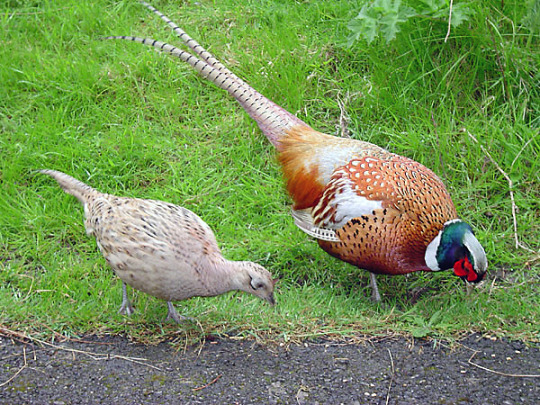
Il dimorfismo ha principalmente la funzione di attrarre l'altro sesso: è infatti tipico di animali poligami, dove durante la stagione degli amori i maschi duellano per la conquista di un territorio.
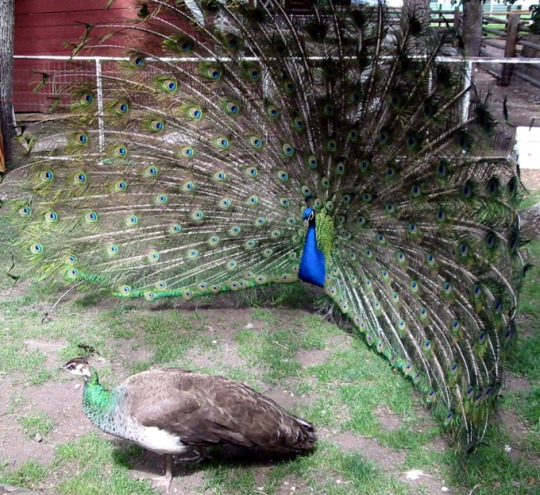
In animali monogami, invece, viene sacrificata la possibilità di avere progenie più numerosa in favore di uno sforzo congiunto per l'allevamento della prole: essendo il partner fisso, le strutture per la difesa dell'harem divengono inutili.
Le caratteristiche sviluppate dai maschi per attrarre le femmine li rendono svantaggiati rispetto a queste ultime, poiché, a causa dei colori sgargianti, sono facilmente localizzabili dai predatori. Le lunghe penne o gli speroni rendono molto più lenti e impacciati nella fuga.
La teoria di questo tipo di dimorfismo si dice "della disabilità": in un organismo il successo riproduttivo conta più della sopravvivenza, e quindi non è importante che un maschio di fagiano comune viva meno di una femmina, se questo permette di lasciare più progenie possibile.
Nella specie Homo sapiens i maschi sono mediamente più alti, più pesanti, più robusti e più forti delle femmine, che da parte loro hanno il bacino più largo e più inclinato all'indietro, spalle più strette, una diversa distribuzione del grasso corporeo e voce più acuta. I maschi inoltre presentano una maggiore quantità di peli (soprattutto sul viso).
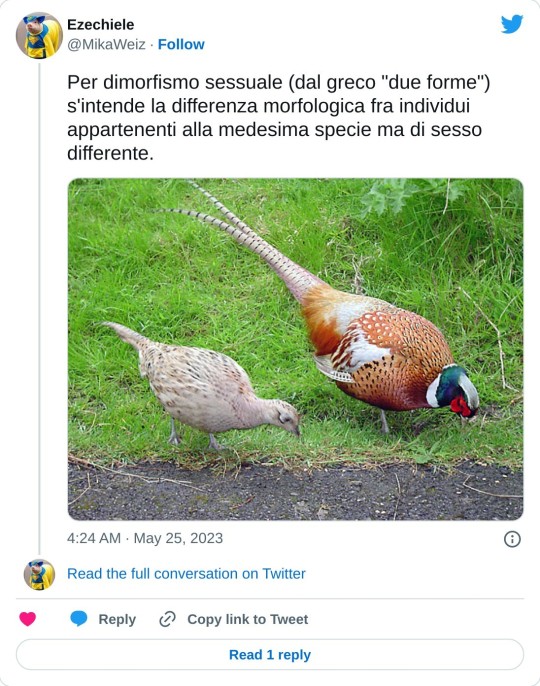
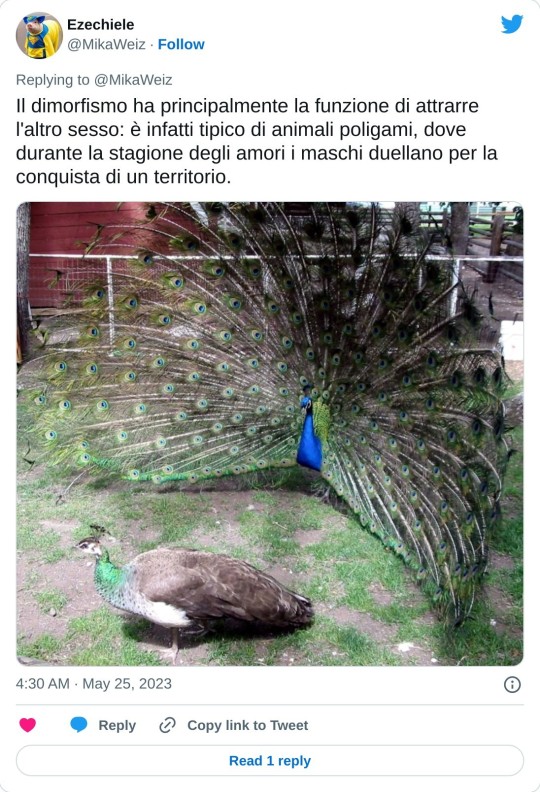




In alcune specie di rane pescatrici, i maschi sono semplici sacchetti di carne senza apparato digerente, che si attaccano alla femmina conducendo una vita parassitica e producendo sperma come unica attività autonoma.

Una situazione simile la si può osservare nell'emittero Veliidae Phoreticovelia disparata (cimice di Zeus), dove il maschio si aggancia alla femmina nutrendosi da un'area ghiandolare posta sul dorso della stessa, anche se può vivere autonomamente.



Nella maggior parte delle cocciniglie, le femmine mancano degli occhi e delle ali, hanno zampe atrofizzate e vivono permanentemente fissate alla pianta ospite, mentre i maschi hanno dimensioni minori e sono alati.
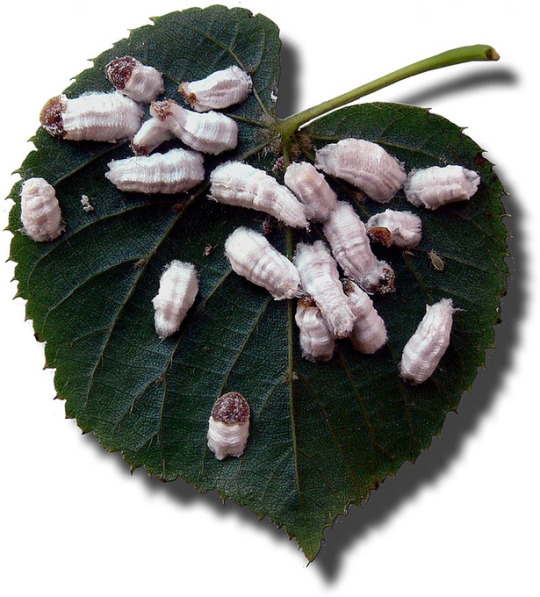
Le cocciniglie o, impropriamente, coccidi (Coccoidea Handlirsch, 1903), sono una superfamiglia di insetti fitofagi compresi nell'ordine dei Rhynchota (sottordine Homoptera, sezione Sternorrhyncha). Il nome cocciniglia deriva dallo spagnolo cochinilla ("porcellino di terra"). Sono insetti esclusivamente fitomizi e costituiscono uno tra i più importanti raggruppamenti di insetti dannosi. La caratteristica generale che contraddistingue questi insetti è il marcato dimorfismo sessuale e la regressione morfologica, anatomica e funzionale delle femmine (neotenia).

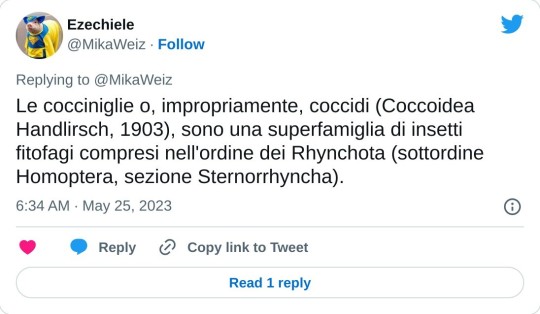



#disformismo sessuale#teoria della disabilità#teoria#disformismo#maschio#femmina#differenze#Homo sapiens
3 notes
·
View notes
Text
@koopaspiderofdarkness BUG TIME



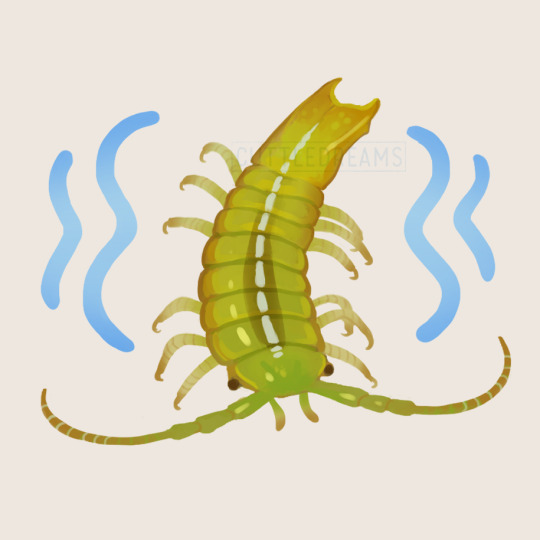
Invertober Days 9 through 12!
- Elephant Hawk Moth ~
-Periodical Cicada ~
-Fruit Fly ~
-Eelgrass Isopod ~
Invertober is put together by fossilforager! Prompt List
#invertebrates#tw insects#arthropoda#myriapoda#hexapoda#chilopoda#insect#diptera#lepidoptera#homoptera#cute stuff
896 notes
·
View notes
Text
heyyyy girlies. My uni has finally blocked sci-hub, and I was wondering if anyone could look to see if they have this paper, and if so could send a pdf of it to meeee??:
Cumber RA. 1966.Factors influencing population levels of Scolypopa australis walker (Hemiptera-Homoptera: Ricaniidae) in New Zealand. New Zealand Journal of Science 9: 336-356.
6 notes
·
View notes
Link
1 note
·
View note
Text
Research - Aphids
Aphid, (family Aphididae), refers to any of a group of sap-sucking, soft-bodied insects (order Homoptera) that are about the size of a pinhead, most species of which have a pair of tubelike projections (cornicles) on the abdomen.
Aphids produce honeydew. Ants protect aphids from weather and natural enemies and transfer them from wilted to healthy plants. In this way the ants ensure their source of honeydew, which they use as food.
More than 4,000 species of aphids have been described. The aphids that our ant shepherd cares for are apple aphids or woolly aphids. apple aphids are yellow-green with dark head and legs. Woolly aphids look like tiny cotton balls or little fuzzy balls of lint.





The image of the woolly aphids from far away on a leaf remind me of sheep grazing in a field, so I though it would be fitting to have this species be the herd that our herding ant character shepherds.
1 note
·
View note
Text
cis‐Jasmone induced resistance
cis ‐Jasmone is a plant volatile known to have roles as an insect semiochemical and in inducing plant defence. It was evaluated in laboratory and field trials for control of cereal aphids. In an olfactometer bioassay cis ‐jasmone was repellent to alatae of the grain aphid, Sitobion avenae (Fabricius) (Homoptera: Aphididae). Moreover, wheat, Triticum aestivum (L), seedlings sprayed with…
View On WordPress
0 notes
Text

Day 4; the Hemiptera order! Specially, I decided to draw a cicada since they're very relevant this year 💀. The Hemiptera order is known as the 'true bugs,' because while most people refer to all insects as bugs that's actually not correct! Only some insects technically classify as bugs.
The main feature of the group is the mouthparts, which are of the piercing/sucking type. The mandibles and maxillae form 2 pairs of piercing stylets and are contained in a flexible sheath derived from the labium.
Traditionally they are divided into two groups based on wing structure: the Heteroptera and Homoptera. However, now the order tends to be divided into three suborders: Sternorrhyncha, Auchenorrhyncha and Heteroptera.
The 2 groups can often be distinguished easily, as the Heteropterans have a large pronotum (plate-like structure that covers all or part of the thorax) and a relatively small mesonotum (middle of the back) and metanotum (the dorsal portion of the metathoracic integument of an insect). Whereas most Homopterans have a small pronotum and a large mesonotum – and slightly smaller metanotum.
Note: The metathorax is the segment that bears the hindwings in most winged insects
You can also tell through the wings. Further to this, the wings of the Heteropterans are usually held flat over the body and the forewings (which are hard and stiff, almost like beetle elytra) have the end part soft and membranous. However, the Homoptera usually hold their wings over the body like a tent and the forewings are entirely sclerotised, with no membraneuos tip.
Note: I learned like 6 new words making this 😭. Also the cicada is saying they only listen to UNDERGROUND DRONE bands get itttttt??
#cicada#hemiptera#music#drone music#underground music#hexapoda#arthropods#drawing#markers#traditional art#artwork#entomology art#entomology#art
0 notes
Text
How to protect your precious plants from larvae

Our plants are like our children. Every day we water them and take care of them. We make sure they get enough sunlight. We make sure that they get all the nutrition that they need. We leave no stone unturned to keep them healthy.
But even after all the care that we take, sometimes it is just not in our hands. One of the most unexpected factors is the attack of pests. Just when we think that everything is going fine, they attack. And then we feel helpless.
One of the biggest problems that many gardeners and farmers face is the infestation of larvae. They eat away your plants in no time. And before you can do anything, they destroy your plants.
So what we can do about it? There are a few things we can do as precautions. One of them is the use of larvicide. A good larvicide can protect your plants from larvae.
If you are looking for some good larvicide, Bulkagrochem.com provides high-quality larvicide. It is highly effective against a variety of pests such as Lepidoptera, Diptera, Homoptera, Thysanoptera, and Coleoptera.
0 notes
Text
also keep forgetting how to spell auchenorrhyncha and stemorrhyncha (sorry if those r spelled wrong). why was homoptera not enough for you people.
unrelated i have an entomology test later today so wish me luck!!! im fairly confident about the id portion (minor orders and families in hemiptera and coleoptera) but im a little nervous about specific behavioral stuff and some terminology definitions that might be on there
7 notes
·
View notes
Text
TIME TO SCREAM
Late spring in central Texas, nice and warm, not quite hot enough to melt your shoes, but hot enough to melt everything in your car.
But it’s not summer until...

the trees start screaming!

I have heard some cicadas farther east of me (a different species than I have), but so far, this year has been quiet. So I feel like I have been visited by the Cicada Queen, who has bestowed upon me a great honor: I saw my first cicada before I heard it. She was hiding in the elm that popped up in my yard!




So beautiful and perfect!!!
Superb Dog-day Cicada
June 3, 2019
#gif#cicada gif#cicada#insect gif#insects#hemiptera#homoptera#finger for scale#harassing wildlife#screaming trees#texas wildlife#entomology#bugblr#at home#night#superb dog day cicada#neotibicen#fashion shoot#perfect#superb
3K notes
·
View notes
Photo

Treehopper. Note, it is not THE treehopper but one of 91 known species in Maryland and thousands world wide. Which one is a great question, have a side and a top shot coming so maybe we can work that out. In the mean time realize that these crazy architectural beings are common and you kill or brush them aside in your yard all the time (if you haven't sprayed it down for mosquitoes that is). This one found on the research lands of USDA now identified as a possible private rail yard for the MAGLEV. this minibeast treehopper was captured by entomologist in training Danie Phan and photographed by biology college boy Anders Croft. maybe this landscape will be there for them when they get to be my age. Or, ... not.
#treehopper#membracidae#insect#homoptera#heteroptera#horned#loco#crazyeyes#insects#cornered#tipped#tippingpoint#greengreen#aliengreen#deviantart#devil#ordered#entomologists
20 notes
·
View notes
Photo

Citrus Flatid Planthopper (Metcalfa pruinosa) on the Lynn Valley Trail earlier this month. Although named for one of its host plant groups, Citrus, this species of Planthopper can and does develop on many different types of trees or shrubs. These Planthoppers mate in the Fall, and lay eggs which will overwinter. The nymphs that hatch from these eggs have waxy filaments covering them, and though a tree branch may be coated by these nymphs they rarely cause serious damage to their host plants. . . . . . . . #nature #ontario #lynnvalleytrail #citrusflatidplanthopper #metcalfa #metcalfapruinosa #planthopper #homoptera #insectecology #macrophotos #macrophotography #ontarioinsect #planthoppersofinstagram #simcoeontario #norfolkwild #blognorfolk #fulgoroidea #flatidae (at Simcoe, Ontario) https://www.instagram.com/p/CFjfdwJgGau/?igshid=96a6kk7gratg
#nature#ontario#lynnvalleytrail#citrusflatidplanthopper#metcalfa#metcalfapruinosa#planthopper#homoptera#insectecology#macrophotos#macrophotography#ontarioinsect#planthoppersofinstagram#simcoeontario#norfolkwild#blognorfolk#fulgoroidea#flatidae
3 notes
·
View notes